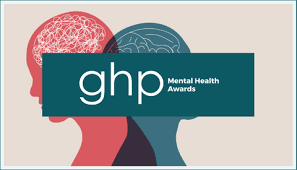A Spotlight on Cutting – The Neurobiology of the Stress & Reward System
In my role as a psychologist and psychotherapist specialising in trauma and somatic work, I support many people who self-harm, particularly those who cut or scratch themselves. From the outside world, any type of self-mutilation can be confusing and to hear phrases like “it feels good”, “it soothes me”, “cutting makes me feel better” and “it makes me feel alive” can be distressing to some.
Put in biological terms, self-harm is the neurobiology of the stress and reward system. The human body has several systems that help us to deal with challenges and self-harm is a maladaptive form of self-regulation. When we are faced with a challenge we go into a state of alert (fight/flight/freeze), which can move into fear and then into dissociation which is a sensation of watching yourself and time distorts. Dissociation is not always negative as certain jobs, competitive sport and high performance skills require it. Dissociation prepares the body for potential injury, our heart rate drops and the body releases Endogenous Opioids, Endorphins and Enkephalins (body’s natural pain killers).
Childhood Adversity and Sensitised Dissociative Response
If we consider adverse childhood experiences such as neglect, sexual and physical abuse, inescapable pain, the inability to be believed or to speak up, not being believed, living in chaos, being under threat, inescapable living situations, disengaged parenting, abandonment, not feeling safe with anyone, outsourced parenting, the lack of language to communicate what is going on for them, unpredictable environments and being generally left to own devices would be a predictor of developing a Sensitised Dissociative Response (SDR) to any challenges. If dissociation is the preferred model of adapting to stress for long periods of time we may see cutting which is one of the common behaviours seen with SDR which is a stress response system that is overly reactive. A history of childhood sexual and physical abuse is a strong predictor of cutting. There is comfort in damaging the self as an attempt to gain some self control.
A human being has systems that need to feel safe, if we have suffered childhood adversity we will most likely have problems self-regulating. We may be flooded by unwanted sensory experiences and images that we don’t know what to do with. We may have encoded muscle memories of helplessness or feelings of disintegration with our own bodies. We have biological systems that continue to pump out hormones to deal with the real or imagined threat.
Some people use numbing to cope (addictions/restrictions), the flip side of this is seeking sensation (cutting) to make the numbness go away which gives us a false sense of control. Sensation seeking relieves the tension when we feel overwhelmed.
Neurobiology of Cutting/Scratching
When a person cuts or scratches themselves the body releases a small amount of opioid to tolerate the pain, but when someone with SDR cuts they will release a larger amount of opioid which to them feels like a hit of morphine or heroin. This opioid burst feels regulatory, soothing and rewarding and can become the preferred method of self-regulation. Some people may try it, but find it so painful that they don’t return to it, but we can see why someone with SDR tendencies would start using it as a coping mechanism.
Support
So how do we help someone who is cutting as a form of self-regulation? We explain the neurobiology of the stress and reward system, we guide them towards self-regulation skills, Vagus nerve work, help them learn skills to keep within their window of tolerance such as Emotional Freedom Technique and breath work, search out an EMDR (Eye Movement De-sensitisation Re-processing) therapist to work through their trauma and adversities, snap an elastic band on the wrists that won’t cut the skin to induce a similar feeling, find a Somatic therapist to help guide them through working to feel safe in their body, seek out a trauma-informed Yoga specialist, an Internal Family Systems therapist and any professional therapist that is trauma-informed. No amount of cognitive or talking therapy in my experience helps with someone that self-harms, it needs to be paired with somatic or a bottom up approach.
References:
The Body Keeps The Score – Van Der Kolk 2014
What Happened to You – Perry & Winfrey 2021
The Molecules of Emotion – Pert 1997

